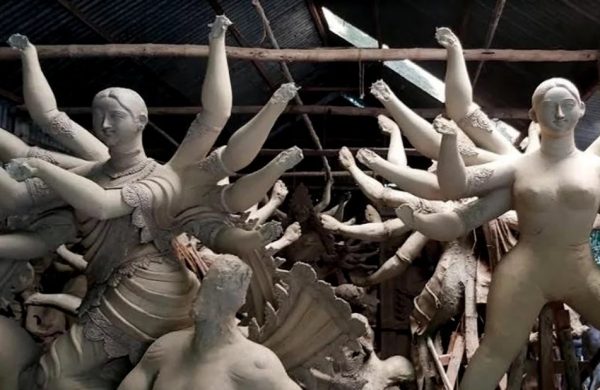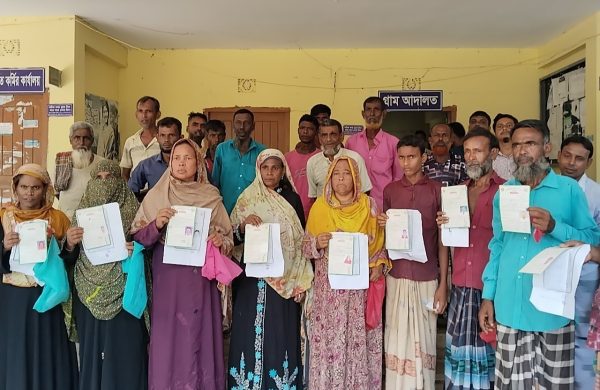Mezban: A tradition of Ctg
- Update Time : Monday, November 4, 2024
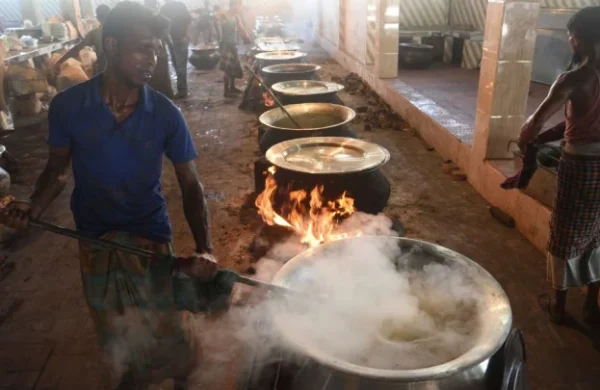
Mezban, or Mezzan as said in Chittagong, isn’t just simply about the food
TDS Desk
Sitting shoulder-to-shoulder with people I’d never met, I felt that old familiar warmth fill me—the warmth only a mezban in Chittagong can bring.
Mezban, or locally called Mezzan, isn’t simply about the food (though the food is unforgettable). It’s about connection. It’s the stories shared, the bonds rekindled, and the sense of belonging that lingers long after the last plate is cleared.
Growing up, mezban was something I looked forward to with excitement and anticipation. When the word spread that someone was holding a mezban, the whole community came alive.
It is a tradition rooted in remembrance, often held to honor a lost loved one or to celebrate a family milestone.
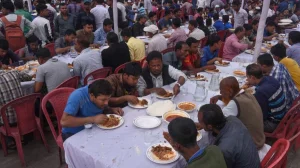
Photo: Collected
BEYOND THE FOOD
For those who haven’t experienced it, the easiest way to describe mezban is as a feast.
The beef curry, known as mezbani mangsho, is undeniably the star of the show. The spices hit you fast, with a kick from red chilies that’s unmistakable. The spice isn’t just a surface sensation—it’s layered, striking your palate at intervals and lingering with a smoky warmth that feels almost comforting. As intense as the mangsho can be, it’s always balanced with lighter sides, such as the rich mezbani dal.
However, it’s not just the taste. Mezban, for me, is about what happens around the food. It’s about family and friends who might not have spoken for months but now sit elbow-to-elbow, bonded by the tradition.
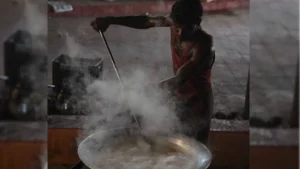
Photo: Collected
THE PREP
The preparation for a Mezban typically begins days in advance, with families making arrangements to accommodate the crowd and source ingredients for a feast that could serve hundreds and beyond.
Sourcing the ingredients is the first crucial step. In the spirit of generosity, no expense is spared. Families often buy locally raised cattle, ensuring the meat is fresh and of high quality. For large gatherings, it’s not uncommon to see several cows brought in, and local butchers and vendors are specially contracted to handle the meat preparation. Spices—cumin, coriander, turmeric, dried red chilies, and more—are purchased in bulk from trusted sources, ensuring the freshest ingredients. Large sacks of rice and lentils are also brought in, while ghee and oil are bought in considerable quantities to give the dishes their richness and depth.
The role of the “baburchis” (chefs) is indispensable in a mezban. The baburchis are highly skilled in preparing mezban dishes, especially the intensely spiced mezbani mangsho, in large batches. They’ve often learned the craft from generations before them, mastering the techniques and secrets that make the dishes memorable. These master cooks arrive early, often the night before the event, and oversee the entire cooking process. Their reputation and skill are well-known in the community, and hiring a respected baburchi is a source of pride for the host family.
Traditionally, mezban is cooked outdoors, in open spaces where multiple wood-fired stoves, or “chulhas,” can be set up to handle the enormous cauldrons required. In rural areas, it’s common to see a dedicated space cleared for the mezban, where large clay or iron chulhas are constructed specifically for the event. These stoves burn wood or charcoal, giving the dishes a distinctive smoky flavor that adds to their richness. As the baburchis stoke the fires, the entire area begins to fill with the aroma of spices, a sign that the cooking is about to begin.
The cooking process is a well-coordinated symphony. The mezbani mangsho is cooked in large iron cauldrons over roaring fires. The baburchis work with long, heavy ladles, stirring the meat and spices together in rhythmic, practiced movements. Timing is everything; each stage of the cooking process has to be precise, with the baburchis adding spices, salt, and other ingredients at just the right moment to ensure the perfect blend of flavors.
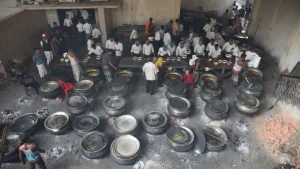
Photo: Collected
CONVERSATION AND COMPETITION
One of my favorite parts of mezban is how little people care about appearances. You’re sitting on shaky plastic chairs—and eating with your hands, leaning over to avoid spilling anything, all while sweat drips down your forehead.
Here, nobody’s shy about piling food onto their plates or going back for seconds (or thirds). Some try to out-eat their friends, boasting of how many servings they can stack on their plates.
Between bites, there’s conversation—catching up on local gossip, exchanging stories, and talking about anything but the reason we’re gathered there, which is often to honor someone who has passed. It’s an unspoken rule, almost as if the food and the companionship are meant to lighten the mood, keeping things upbeat even if we’re there to mark a loss.
Mezban feels like a rite of passage for those of us from Chittagong. You’re always invited, whether or not you know the host well, and nobody questions it. That’s the beauty of it—you don’t need introductions. The table itself is an introduction, a reminder that you’re welcome, and that’s all that matters.
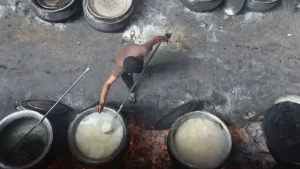 WIND OF CHANGE
WIND OF CHANGE
These days, the tradition of mezban has shifted a little. With urban life pressing in, some families opt for restaurant-hosted mezbans, or they simplify the spread for the sake of convenience. I get it—hosting a traditional mezban takes planning, space, and money. However, I think it’s worth it because mezban is a way of saying “we’re here, together.” And no matter how it’s done, that’s the spirit I hope we never lose.
In the end, mezban isn’t just a feast; it’s a reminder of who we are, with our loud conversations, casual invitations, and shared plates. Each mezban I attend feels like revisiting my roots, even if the faces around the table change and even if some of them are strangers.




